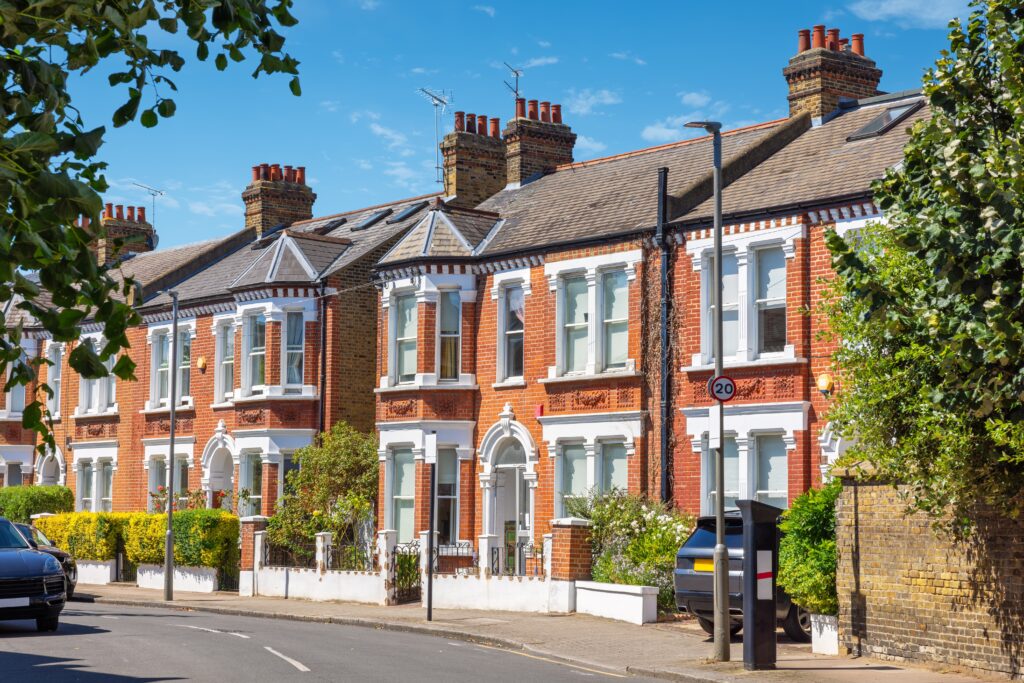UK house prices increased by 4.7% in 2024, according to Nationwide, despite affordability challenges. The average home cost £269,426 at the end of December. However, prices remained below the summer 2022 peak, with terraced homes experiencing the fastest growth. Northern Ireland saw the highest regional price increases, followed by northern England.
2024 Housing Market: Growth and Regional Trends
In 2024, the UK housing market demonstrated “remarkable resilience,” with house prices rising by 4.7%. The average cost of a home at the end of December was £269,426, a modest increase compared to 2023. While house prices saw growth, they remained below their peak from the summer of 2022.
Terraced homes were the most significant drivers of price growth, with some regions, especially Northern Ireland and northern England, experiencing the most substantial increases. All regions across the UK saw some level of growth in 2024, signaling continued demand in the housing market despite affordability challenges.
2025: Challenges and Changes Loom
As the UK heads into 2025, uncertainty looms around interest rates and stamp duty changes, which may pose challenges for both buyers and sellers. Experts predict an uptick in sales activity before significant stamp duty changes take effect in April 2025, followed by a likely slowdown.
From April, buyers in England and Northern Ireland will pay stamp duty on homes costing over £125,000, down from £250,000. Additionally, first-time buyers will see their stamp duty exemption reduced from £425,000 to £300,000. These changes may further strain affordability for first-time buyers, who already face difficulties saving for deposits due to high house prices relative to earnings.
Mortgage Rates and Housing Affordability Outlook
While interest rates may decrease gradually throughout 2025, making mortgages more affordable, there are still significant challenges ahead. The Bank of England is expected to reduce rates, but Governor Andrew Bailey has warned that predicting rate changes remains difficult.
The UK Finance forecast predicts a 10% rise in mortgage lending for home purchases this year. However, some analysts believe this prediction may be overly optimistic, as fixed-rate mortgages remain dominant in the market. Around eight in 10 homeowners are on fixed-rate deals, which will not change until renewal, typically after two or five years. As a result, many homeowners may face higher mortgage costs when their current fixed-rate deals expire, even if rates fall in the meantime.
The Bank of England estimates that by 2027, 4.4 million mortgage holders will see their payments increase, with a typical homeowner potentially paying an additional £146 per month when transitioning to a new mortgage rate.
Stamp Duty and Rental Growth Affecting First-Time Buyers
Robert Gardner, Nationwide’s chief economist, pointed out that high house prices relative to earnings, coupled with ongoing economic struggles, continue to make saving for deposits difficult, particularly for first-time buyers. Record rental growth is further exacerbating the challenge, as renters face increased difficulty saving for a home.
Financial planner Holly Tomlinson highlighted that upcoming stamp duty changes will add financial strain to first-time buyers, particularly as they try to navigate the affordability hurdles.
What Lies Ahead for the Housing Market?
As the UK housing market faces numerous challenges, both buyers and sellers will need to adapt to a changing environment in 2025. Falling mortgage rates and rising wages could improve housing affordability, but the ongoing pressure from high house prices and potential tax increases suggests that 2025 could be a year of mixed results.
Nationwide’s house price data excludes cash buyers and buy-to-let deals, but cash buyers still represent about one-third of all housing sales, which may influence future trends. Halifax, a rival lender, is set to release its 2024 data soon, which will offer additional insights into the housing market’s performance and trends for the upcoming year.


